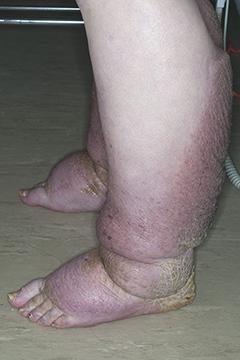(BMJ)—A 55-yo woman presents w/ a 4-mo hx of fatigue and leg swelling. Exam: bilateral leg swelling w/ verrucous deformity, hyperplasia, hyperkeratosis, and elephantiasis. Which lab test confirmed the dx?

|
Serum albumin
|
|
Fungal culture
|
|
TSH
|
|
CA-125
|
|
D-dimer
|
